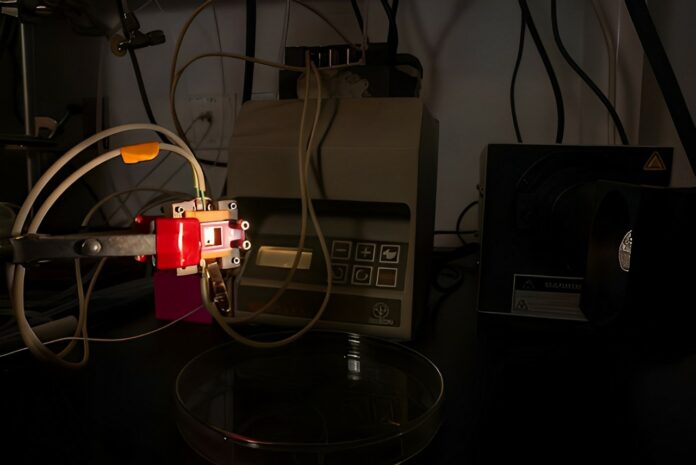As we strive towards a more sustainable future, it’s becoming increasingly important to find innovative ways to decarbonize industry and facilitate clean energy storage.
One promising approach is the manufacture of valuable products and fuels using available, low-cost feedstocks like water, carbon dioxide, nitrogen, and solar energy. By harnessing the power of these abundant resources, we can reduce our reliance on fossil fuels and move towards a cleaner, more sustainable energy future.
In a similar effort, Rice University engineers have developed a device that can turn sunlight into hydrogen with record-breaking efficiency – a significant step forward for clean energy. The device combines next-generation halide perovskite semiconductors with electrocatalysts in a single, durable, cost-effective, and scalable device.
Researchers built the integrated photoreactor using an anticorrosion barrier that insulates the semiconductor from water without impeding the transfer of electrons. The new technology could serve as a platform for a wide range of chemical reactions that use solar-harvested electricity to convert feedstocks into fuels.
“Using sunlight as an energy source to manufacture chemicals is one of the largest hurdles to a clean energy economy,” said Austin Fehr, a chemical and biomolecular engineering doctoral student and one of the study’s lead authors. “Our goal is to build economically feasible platforms that can generate solar-derived fuels. Here, we designed a system that absorbs light and completes electrochemical water-splitting chemistry on its surface.”
The device is known as a photoelectrochemical cell because everything – from the absorption of light, its conversion into electricity, to the use of the electricity to power a chemical reaction – occurs in the same device. Until now, using photoelectrochemical technology to produce green hydrogen was hampered by low efficiencies and the high cost of semiconductors.
The new system was created by turning the team’s highly competitive solar cell into a reactor that could use harvested energy to split water into oxygen and hydrogen.

It was a real challenge for the team to overcome the instability of halide perovskites in water. The semiconductors needed insulation, but the coatings used often ended up doing more harm than good by disrupting their function or even damaging them. It took a lot of ingenuity and experimentation to find a solution that worked.
“Our key insight was that you needed two layers to the barrier, one to block the water and one to make good electrical contact between the perovskite layers and the protective layer,” Fehr said. “Our results are the highest efficiency for photoelectrochemical cells without solar concentration and the best overall for those using halide perovskite semiconductors.”
“It is a first for a field that has historically been dominated by prohibitively expensive semiconductors and may represent a pathway to commercial feasibility for this type of device for the first time ever,” Fehr said.
The photoreactor achieved a 20.8% solar-to-hydrogen conversion efficiency on a 0.44 cm2 area with 102 hours of operation. Additionally, researchers’ barrier design worked for different reactions and with different semiconductors, making it applicable across many systems.
“We hope that such systems will serve as a platform for driving a wide range of electrons to fuel-forming reactions using abundant feedstocks with only sunlight as the energy input,” chemical and biomolecular engineer Aditya Mohite said.
“With further improvements to stability and scale, this technology could open up the hydrogen economy and change the way humans make things from fossil fuel to solar fuel,” Fehr added.
Journal reference:
- Austin M. K. Fehr, Ayush Agrawal, Faiz Mandani, Christian L. Conrad, Qi Jiang, So Yeon Park, Olivia Alley, Bor Li, Siraj Sidhik, Isaac Metcalf, Christopher Botello, James L. Young, Jacky Even, Jean Christophe Blancon, Todd G. Deutsch, Kai Zhu, Steve Albrecht, Francesca M. Toma, Michael Wong, and Aditya D. Mohite. Integrated halide perovskite photoelectrochemical cells with solar-driven water-splitting efficiency of 20.8%. Nature Communications, 2023; DOI: 10.1038/s41467-023-39290-y
